A swing to Virginia Beach
One day I decided to swing to Virginia Beach. By "swing" I mean a spontaneous trip. It was not short or quick -- in all I drove nearly 500 miles (498 to be exact), waking up before 6AM and not getting home until 11PM. But was it worth it? Read on. (Click on each image to see the high-resolution version)
My first stop was at Gloucester Point Beach Park. An Eared Grebe, a rarity in our state, was reported a few days ago here. Sure enough, as soon as I stepped to the beach I saw the grebe. It got fairly close to tbe boat ramp and offered excellent photo opportunities. What's more, a pair of Horned Grebes were also there, as if to pose for comparison. All of them were coming into breeding plumage and looked weirdly beautiful (or beautifully weird), as grebes do.
I also saw a Bonaparte's Gull in the water. Both it and the Eared Grebe were new birds to me (in fact there were the 299th and 300th wild birds I've photographed in North America). Thus around 10AM and I already "bagged" two new birds. My day got to a good start! As it turned out, I would get better pictures of Bonaparte's Gulls later, so read on.
My next stop, after a quick lunch, was at the Chesapeake Bay Bridge and Tunnel (CBBT). This was the second time I drove through this engineering marvel. It really is an interesting structure -- it is part bridge, part tunnel (hence the name), and the road sometimes spans over the water, sometimes dips underneath (twice), quite an experience to drive through it. The following picture was taken at the northern end of the first manmade "island" where the road just dips under the water -- you can see the second "island" in the distance, and in between them is the shipping channel where the tunnel lies underneath.
There were many Ruddy Turnstones on the island. They were unafraid and in fact picking up food debris left by tourists in the parking lot. Tame or not, they are beautiful birds. I walked around the island and saw many birds -- Long-tailed Ducks, Red-breasted Mergansers, gulls of many kinds, cormorants, and an American Oystercatcher (none of these was shown here as they were distant and the photos were not good). A couple of Purple Sandpipers were probing in the rock pilings around the island and allowed some good picture taking.
There were also many Rock Doves (Ferral Pigeons) on the island. These are non-native species and are really nuisance birds. But don't tell the brids about that -- they are beautiful birds just the same.
After crossing the CBBT, I made a stop at Eastern Shore of Virginia National Wildlife Refuge. This stop was somewhat disappointing. To be sure I saw many birds, in particular many raptors were apparently migrating through -- Bald Eagles, Ospreys, Red-tailed Hawks, Turkey Vultures and Black Vultures, but they were too far for good pictures. I did see a Gray Catbird, first of the year for me.
There were many places where I could have stopped, but alas, the day was getting late and I needed to get back home. So I turned around. Crossing the CBBT, I stopped at the first island again. The Ruddy Turnstones were still there, now bathed in the late afternoon sunlight, looking even prettier.
I was going to call it a day and hurry back home. But then I got stuck into a very bad traffic jam in Norfolk. Frustrated, I stopped at Ocean View Beach Park to wait out the traffic. This turned out to be a blessing in disguise, as I got many good pictures of gulls of several kinds. To top it off, I also got another new bird -- a pair of Brants (my 301th North American bird).
Some of the gulls I could identify, but some, especially the immature ones, confused me. After consulting with some mailing lists and online forums, I was able to identify them as follows.
A group of Sanderlings were also probing on the beach, offering excellent photo opportunities.
Reluctantly, I had to leave the beach in the sunset. Before I left, I snapped a few pictures of the beach and the bay.
But my day was not yet over! In the parking lot I saw a couple of Kiildeers in the fading sunlight.
Now it was time to leave for the 4-hour drive home.
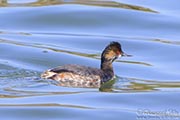
Eared Grebe
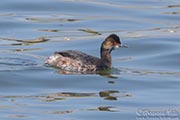
Eared Grebe
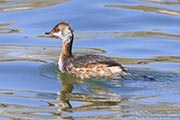
Horned Grebe
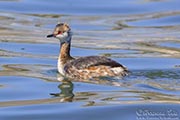
Horned Grebe
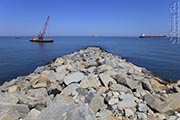
Chesapeake Bay Bridge and Tunnel (CBBT)
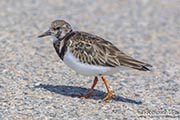
Ruddy Turnstone
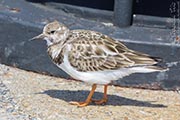
Ruddy Turnstone
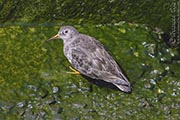
Purple Sandpiper
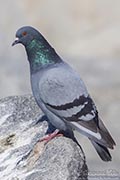
Rock Dove
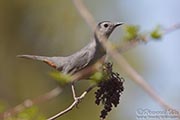
Gray Catbird
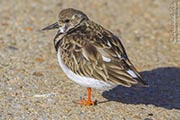
Ruddy Turnstone
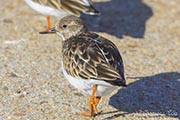
Ruddy Turnstone
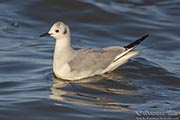
Bonaparte's Gull
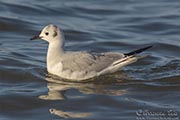
Bonaparte's Gull
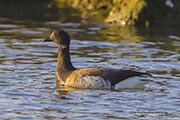
Brant
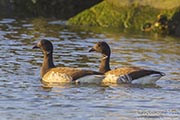
Brants
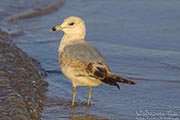
Ring-billed Gull (first cycle)
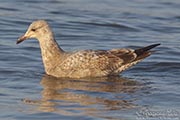
Herring Gull (first cycle)
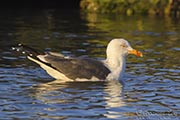
Lesser Black-backed Gull
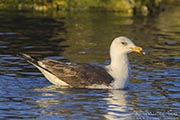
Great Black-backed Gull (third cycle)
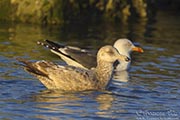
Herring Gull (first or second cycle)
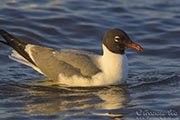
Laughing Gull
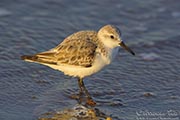
Sanderling
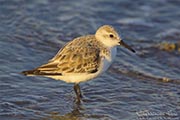
Sanderling
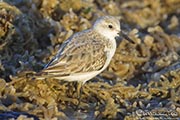
Sanderling
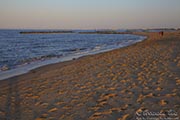
Ocean View Beach
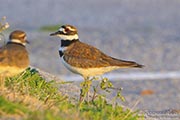
Killdeer
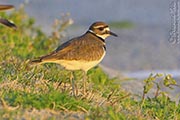
Killdeer